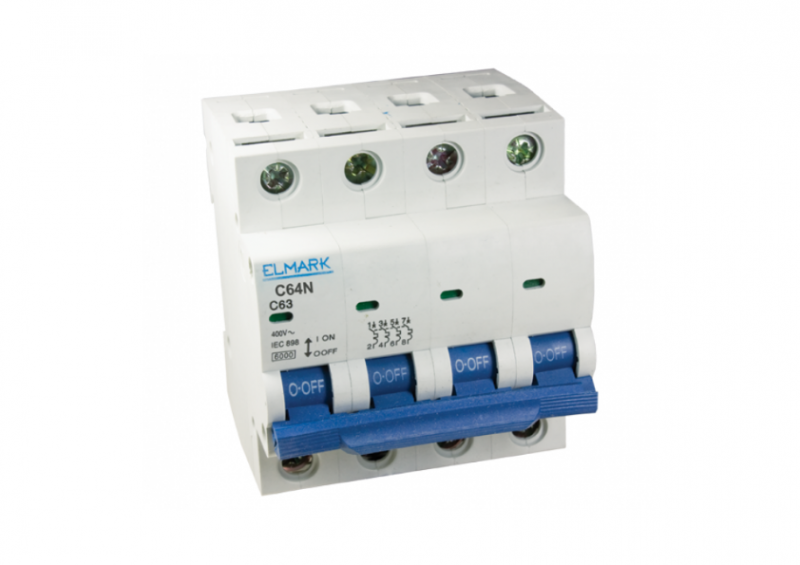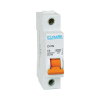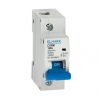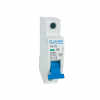
Circuit breakers: you may have heard this term, but have you ever wondered what exactly these small appliances are?
You as sure to have seen them dozens of times: in your home, office, hotels, shops, schools, etc. They are used in the electrical systems of all buildings.
Today on the Elmark blog we decided to take a closer look at these small appliances and give you more information about their benefits and what to do if you need to replace some of your fuses or circuit breakers.
Below we will also answer questions about how they work, how they are designed and how to choose new circuit breakers.
1. How circuit breakers work
As their name implies, the purpose of circuit breakers is to protect your electrical system from overload or short circuit.
In the past, this was done by fuses. The problem with fuses is that they have to be replaced after they blow, while circuit breakers do not.
The main advantage of these contemporary devices is that they can be re-used after they have cut the electrical circuit.

2. Circuit breaker types and build
There are two main types and several components that make up these finished devices.
The two main types we mentioned are electromagnetic circuit breakers and bimetallic strip circuit breakers. There are also combination models containing both of these systems.
The electromagnet generates a magnetic force inside itself, which is directly linked to the current in the electrical circuit.
Bimetallic strip circuit breakers work on a different principle. This mechanism works by using the heat from the passing electric current.
In addition to their internal make-up, circuit breakers also comprise a toggle, a switching mechanism and an arc quenching chamber.
The toggle (or handle) is used to manually switch and return to the starting position and to show the status of the switch (on/off).
The switching mechanism moves the contacts of the device itself, which can move separately or simultaneously depending on the model.

3. Basic operating principles of circuit breakers
After looking at the types and design of circuit breakers, we will describe their basic operating principles or, more generally, how exactly they work.
We described above in general terms what electromagnetic and bimetallic strip circuit breakers are, but here we will take a closer look at their operating method.
With electromagnets, in the event of a power surge the magnetic force reaches a certain limit at which the circuit is automatically cut to prevent overload.
Bimetallic plate circuit breakers work differently: if the current in the circuit rises beyond certain limits, the temperature of the bimetallic strip also increases, causing one metal to heat up and expand more than the other. This, in turn, makes the strip bend and break the circuit.
The main advantage of this type of circuit breaker lies in the fact that when the bimetallic strip cools, it goes back to its original shape.
All you need to do is turn on the device, after which the circuit is restored. You don’t need to replace the device, as with the old fuses.

4. What kind of circuit breaker accessories can you use?
New electrical system technologies and practices offer ever more up-to-date, easy and convenient solutions for your home.
Don’t hesitate and take advantage of such accessories and extras that will make your everyday life easier.
In the Elmark Online Store you will find a range of accessories to buy and apply to your circuit breakers and we will introduce you to some of them.
Remote stop: the name of this accessory largely reveals its purpose, i.e. to remotely cut the electrical circuit when applying a voltage.
In this way, if you are unsure and concerned about your electrical system at any time, you can take the necessary precautions and break your electrical circuit.
Auxiliary switch: this little device is very useful, especially when you are away and monitoring your electrical system remotely.
If your circuit breaker is activated and the circuit is interrupted, this auxiliary switch sends a signal to the control and alarm system to notify you that the safety system has been activated.
Combined Voltage Switch: you should definitely obtain this really useful accessory. The purpose of this switch is to monitor the voltage in your circuit and, if necessary, to trip the circuit breaker.
The combined voltage switch will monitor your network for low voltage below 170 V AC or high voltage exceeding 270 V AC and, if the voltage falls outside these values, it will trip the circuit breaker, protecting your electrical appliances.
This switch is usually fitted on the main circuit breaker, but it can be fitted on a particular circuit in your wiring.
If you are interested in more auxiliary devices and accessories, check out the Elmark online store.

5. Useful tips for choosing and operating circuit breakers
Like everything in your home, circuit breakers deteriorate over years of regular operation.
To find out whether the device needs to be replaced, we need to look at some very important features. Even the smallest things can be a problem, so be alert.
One of the main "symptoms" of a worn-out circuit breaker is that it smells of burning. If this often happens, the plates should be replaced. Other signs to look out for include overheating, an unusual noise when in operation and frequent tripping.
If you conclude that you need a new circuit breaker, you need to look for and choose a new one from among the sea of products, models and prices.
Our advice is to focus mainly on the rated current values. Make the required electrical calculations for your system and familiarise yourself with its requirements.
Once you have done this you will have an idea of what product you need and how to find it on the market.
Circuit breaker types and build
Basic operating principles of circuit breakers





